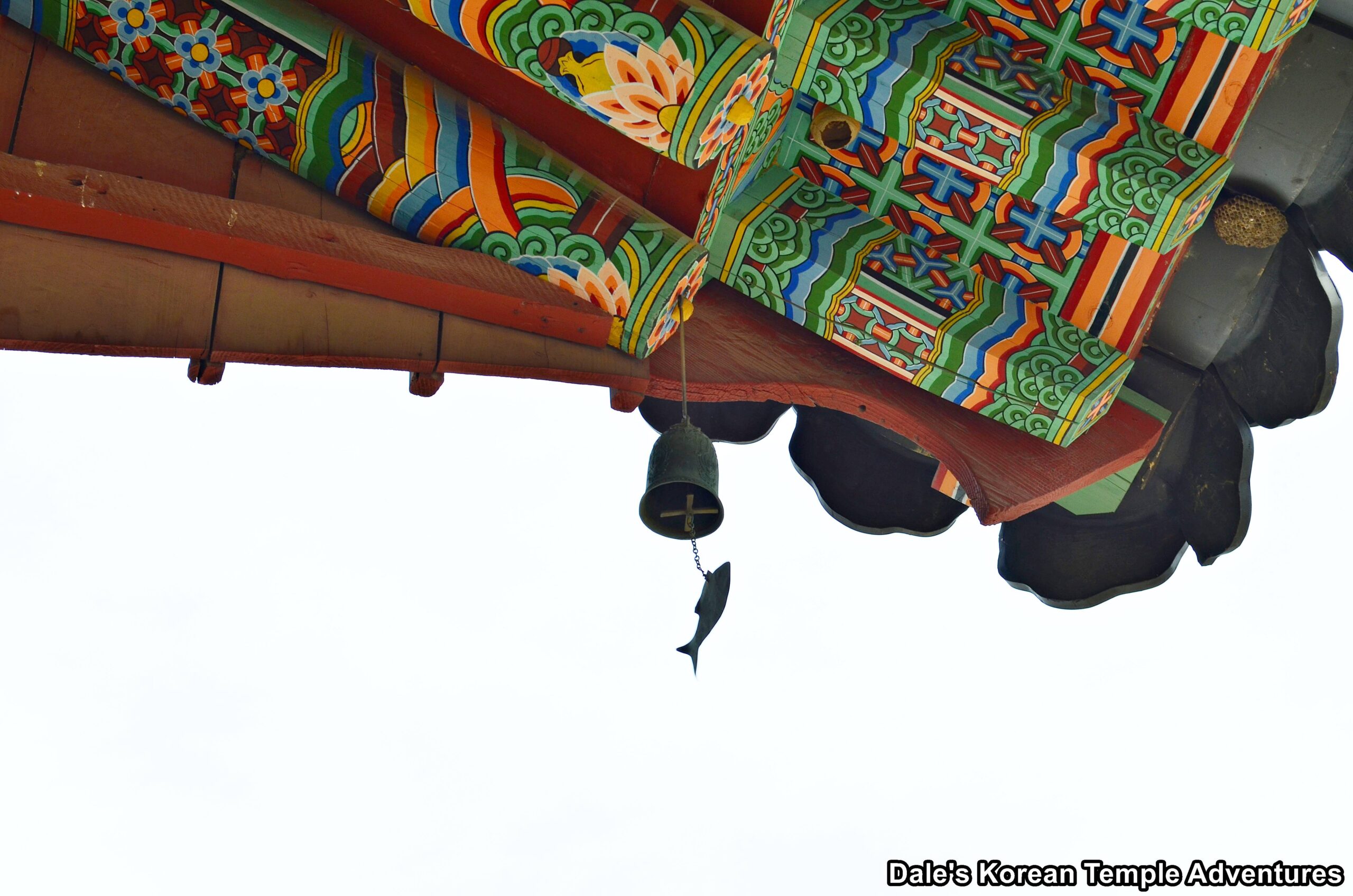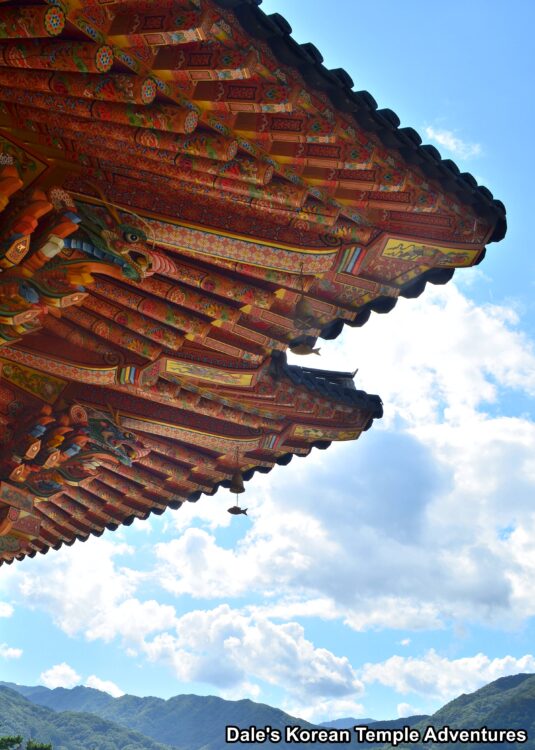Punggyeong – Fish-Shaped Wind Chimes: 풍경
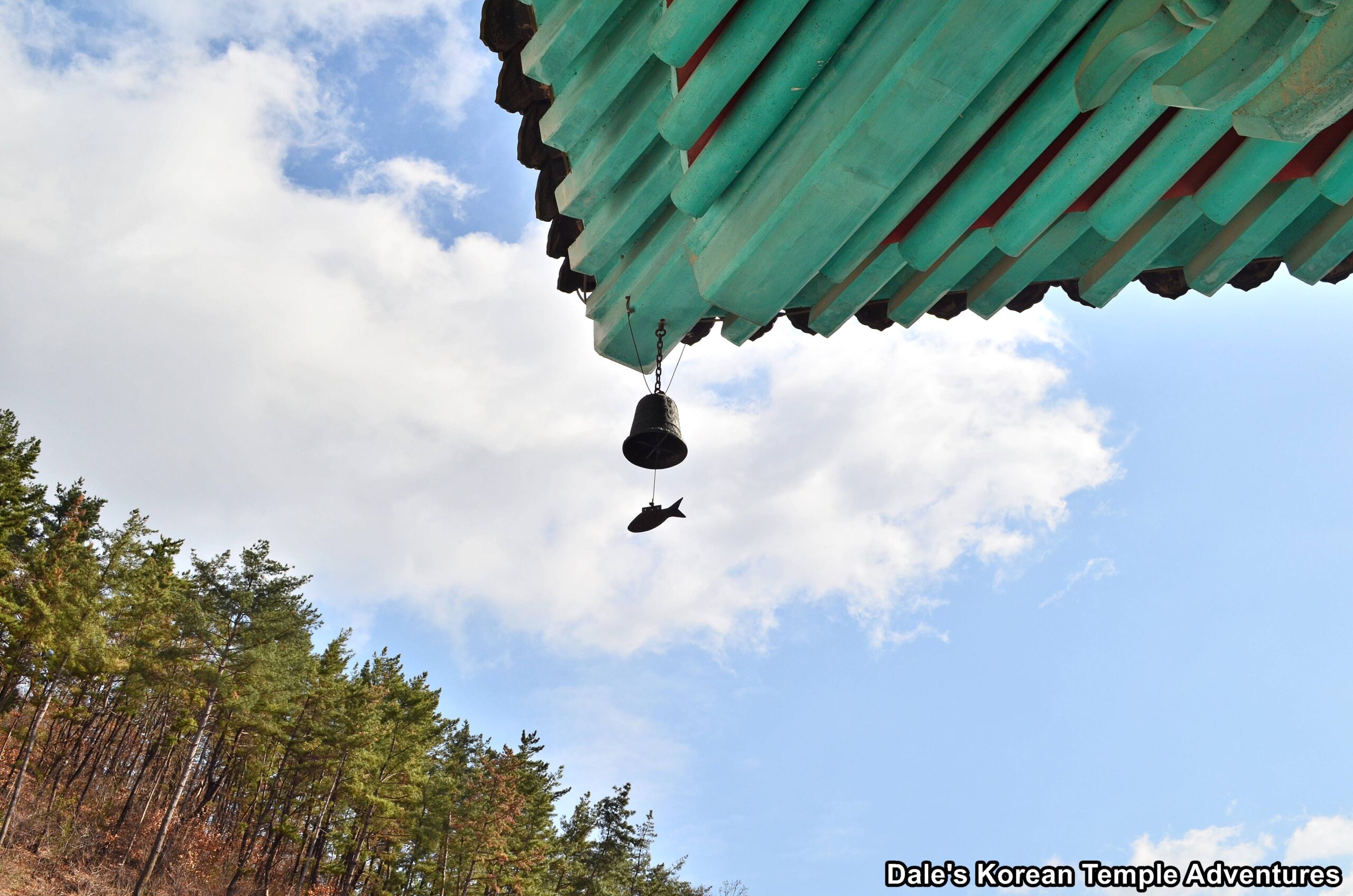
Introduction
One of the most beautiful decorative items that you’ll find adorning a Korean Buddhist temple or hermitage are the melodious wind chimes that hang from the eaves of a shrine hall. And while these Fish-Shaped Wind Chimes, or “Punggyeong – 풍경” in Korean, are absolutely beautiful, but like everything else at a Korean Buddhist temple, they have a symbolic meaning. So what do they look like? Why are they shaped like a fish? And why do you find them adorning Korean Buddhist temple shrine halls?
Fish-Shaped Wind Chime Design
When you first approach a temple, especially on a windy day, you’ll be able to hear a slight ringing in the air. This is the Fish-Shaped Wind Chime that is so prominently displayed up in the eaves of temple structures, especially shrine halls.
First, the bell is smaller is size. It has a typical bell shape as is the clapper/striker, as well. What differentiates the Fish-Shaped Wind Chime is that the sail, which dangles down from the bottom of the bell’s opening, is shaped like a fish. This fish-shaped sail dangles down from a mid-sized string/cord and allows the clapper/striker to hit off the interior of the bell. This is what allows the temple to sound so beautiful, especially on windy days. Also, this style of bell is traditionally made of bronze.
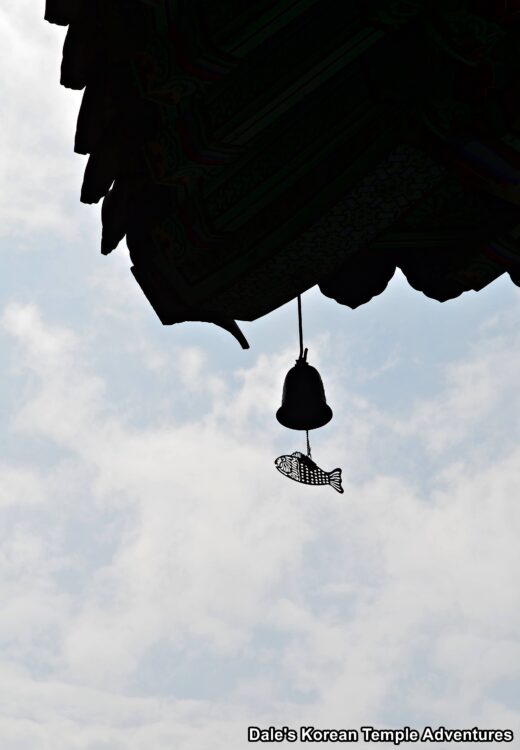
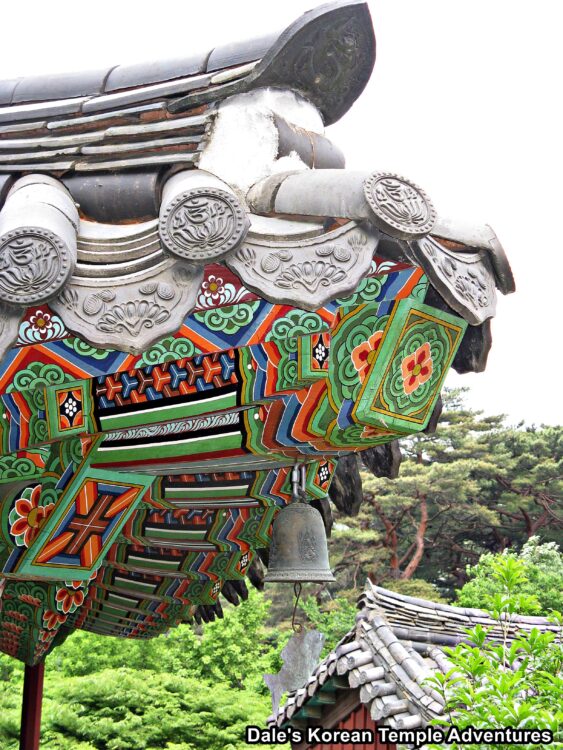
Fish-Shaped Wind Chime Meaning
There are three meanings behind the design of the Fish-Shaped Wind Chime. The first is that the wind chime allows the wind to pass through the chime. This is likened to the condition of complete freedom from obstruction. This is centred on one of the core beliefs in Buddhism: the shedding of the superficial for the Truth. The second is found in the meaning behind the eyes of the fish. Like in real life, a fish never closes its eyes whether it’s asleep or awake. Similarly, the Fish-Shaped Wind Chime rings both night and day without ceasing and never getting tired. This is important symbolically because it’s a reminder to both monks and nuns to remain diligent on their path inside the Dharma and on their journey towards enlightenment. And the third, and final, meaning behind the Fish-Shaped Wind Chime is that the bell’s sound is meant to dispel evil spirits. As a bit of a side note, this is why you’ll see both houses and apartments in Korea having a Fish-Shaped Wind Chime near their entryways.
Conclusion
Much like all artwork that adorns Korean Buddhist temple halls, the Fish-Shaped Wind Chime has so much more symbolic meaning than simply looking and sounding great. So the next time you hear a ringing in your ear at a temple, you’ll know that this sound is a reminder to the faithful to remain vigilant on their journey towards Buddhahood. And if there’s an evil spirit around, it might just dispel a spirit or two.
